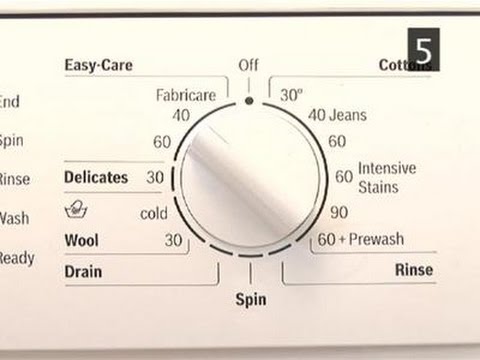
Washing machines have become an indispensable part of modern life, simplifying the chore of laundry and freeing up our time. However, navigating the array of buttons on washing machine can seem daunting for some. From selecting the right wash cycle to adjusting water temperature and spin speed, understanding these controls is key to achieving perfectly clean clothes while protecting your garments. This comprehensive guide will demystify common washing machine buttons and settings, empowering you to become a laundry master.
This article will delve into the various wash cycles available, explain the significance of water temperature settings, explore different spin speeds and their impact, and shed light on soil level selection for optimal cleaning. We’ll also cover additional wash settings and features that can enhance your laundry experience. By the end, you’ll have a clear understanding of how to use your washing machine effectively and efficiently.
Washing Machine Cycles Explained
Washing machines offer a range of pre-programmed cycles designed to handle different types of fabrics and soil levels.
Common Wash Cycles:
- Normal/Regular Cycle: This versatile cycle is suitable for everyday laundry, including cotton clothes, linens, and synthetic fabrics with moderate soiling. It typically involves a combination of wash and rinse cycles with a standard spin speed.
Delicates Cycle: This gentle cycle is specifically designed for delicate fabrics like silk, lace, or lingerie. It features slower agitation and lower water temperatures to prevent damage.
Permanent Press Cycle: This cycle aims to reduce wrinkling in synthetic fabrics by using a combination of wash cycles with reduced agitation and a higher spin speed.
- Heavy Duty Cycle: This powerful cycle is ideal for heavily soiled items like towels, jeans, or work clothes. It uses longer wash times, hotter water temperatures, and increased agitation to effectively remove stubborn stains.
Specialty Cycles:
Some washing machines offer additional specialty cycles tailored to specific needs:
- Quick Wash Cycle: This short cycle is perfect for lightly soiled garments that require a quick refresh.
- Sanitize Cycle: This cycle uses high water temperatures to kill bacteria and germs, making it suitable for bedding or towels.
- Wool Cycle: This delicate cycle is specifically designed for wool garments, using gentle agitation and cool water temperatures to prevent shrinkage.
Understanding Water Temperature Settings
Water temperature plays a crucial role in the effectiveness of your wash cycle. Different fabrics and soil levels require specific temperatures for optimal cleaning:
- Hot Water (140°F/60°C): Ideal for heavily soiled items like towels, bedding, or whites. Hot water effectively kills bacteria and removes tough stains.
Warm Water (100-120°F/38-49°C): Suitable for most everyday laundry, including cotton clothes, synthetics, and colors. Warm water cleans effectively while being gentler on fabrics.
Cold Water (32-60°F/0-15°C): Best for delicate fabrics like silk, wool, or lingerie. Cold water prevents shrinkage and fading. It’s also energy-efficient as it requires less heating.
Spin Speed Options and Their Impact
The spin speed determines how fast the drum rotates during the rinse and final cycle. Higher spin speeds extract more water from your clothes, resulting in faster drying times.
- Low Spin Speed: Gentle on delicate fabrics and prevents excessive wrinkling. However, it leaves more moisture in the garments, extending drying time.
- Medium Spin Speed: A good balance between gentle care and efficient water removal. Suitable for most everyday laundry.
- High Spin Speed: Extracts maximum water from clothes, significantly reducing drying time. Ideal for towels or items that need to dry quickly.
Soil Level Selection for Optimal Cleaning
Most washing machines offer a soil level setting that allows you to adjust the wash intensity based on the amount of dirt or grime present:
- Light Soil: Suitable for lightly soiled garments like shirts, blouses, or underwear. Uses less water and detergent for a gentle clean.
- Medium Soil: A good choice for moderately soiled clothes like jeans, pants, or dresses. Provides a balanced wash with adequate cleaning power.
- Heavy Soil: Ideal for heavily soiled items like towels, work clothes, or muddy garments. Uses more water and detergent to effectively remove stubborn stains.
Additional Wash Settings and Features
Beyond the core settings, many washing machines offer additional features that can enhance your laundry experience:
Pre-Wash Option:
This setting adds an extra rinse cycle before the main wash, helping to loosen dirt and pre-treat heavily soiled items.
Delay Start:
Allows you to schedule your wash cycle to start at a later time, convenient for busy schedules or taking advantage of off-peak electricity rates.
Steam Function:
Uses steam to penetrate fabrics and remove wrinkles, sanitize clothes, or freshen up lightly soiled garments.
Conclusion
Understanding the function of buttons on washing machine is essential for achieving optimal cleaning results and extending the life of your garments. By carefully selecting the appropriate wash cycle, water temperature, spin speed, soil level, and utilizing additional features, you can tailor your laundry experience to meet your specific needs. This guide has provided a comprehensive overview of common washing machine settings, empowering you to confidently navigate your appliance and achieve perfectly clean clothes every time.
